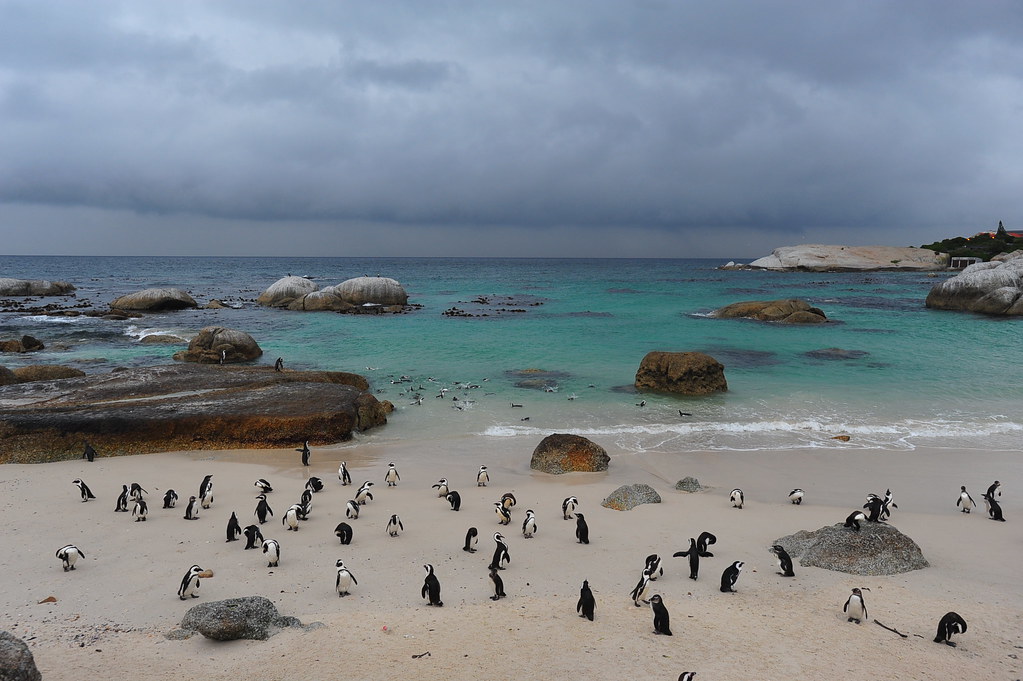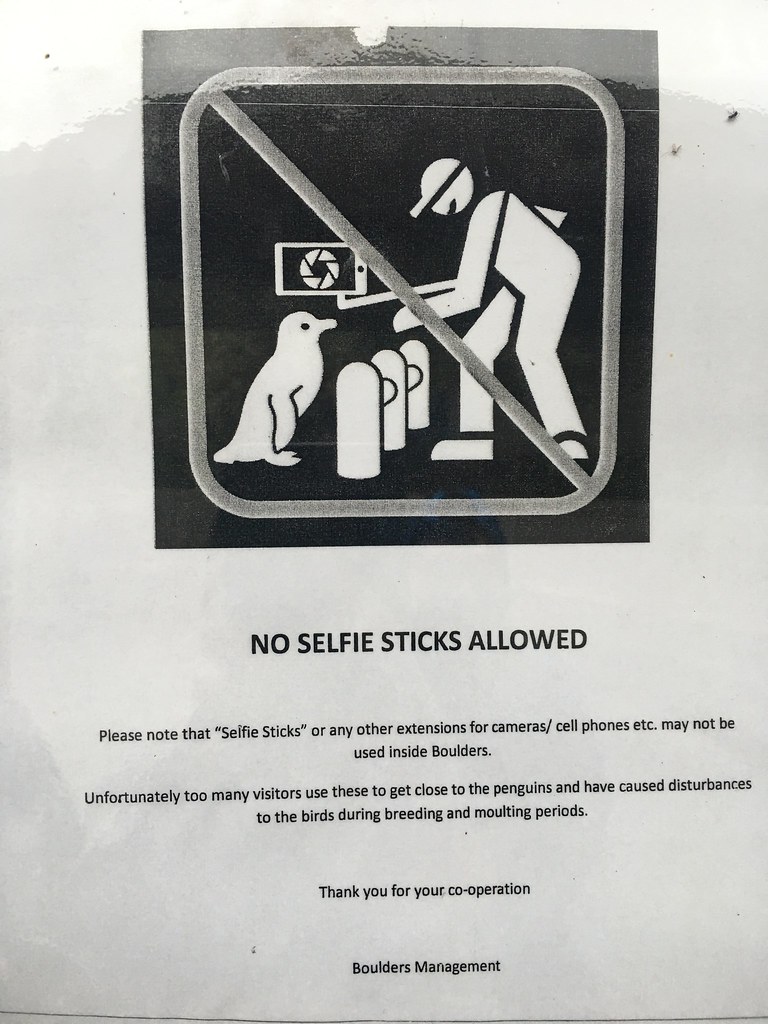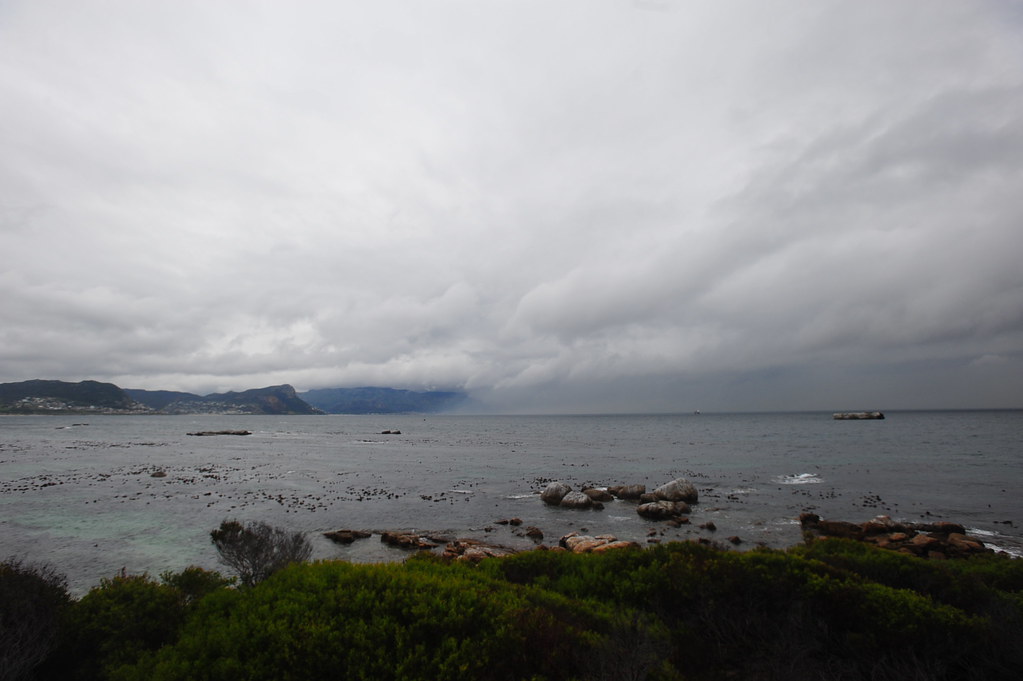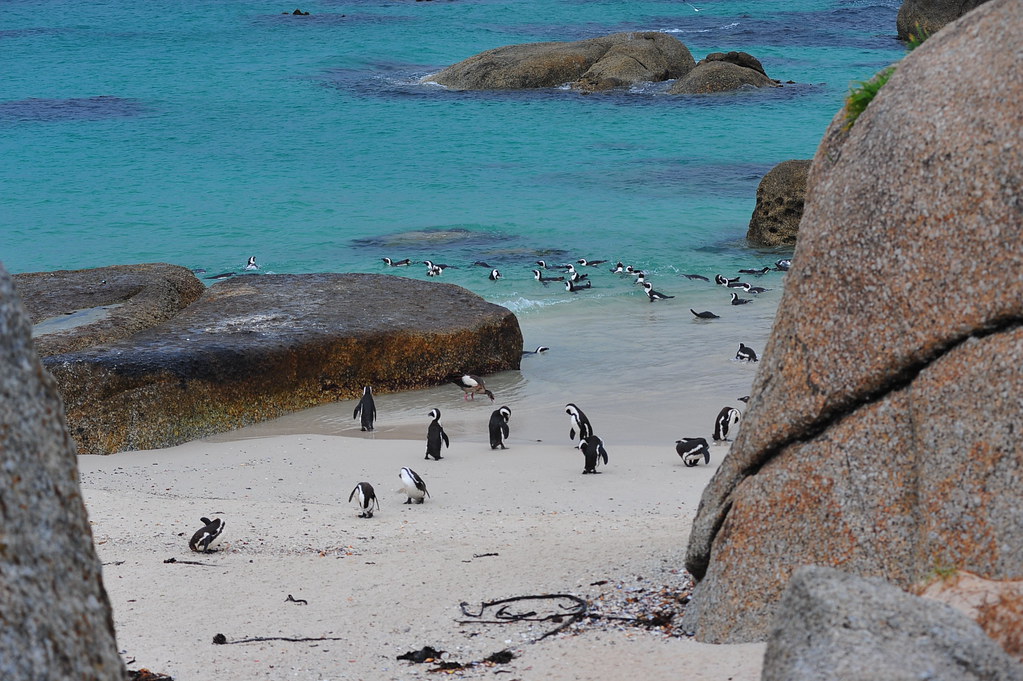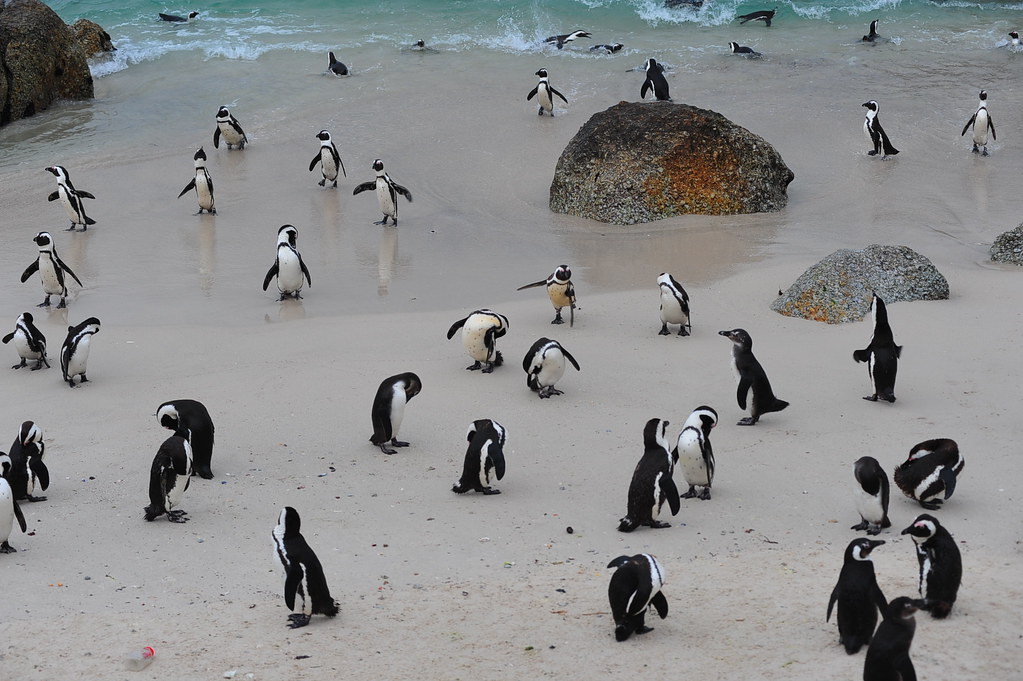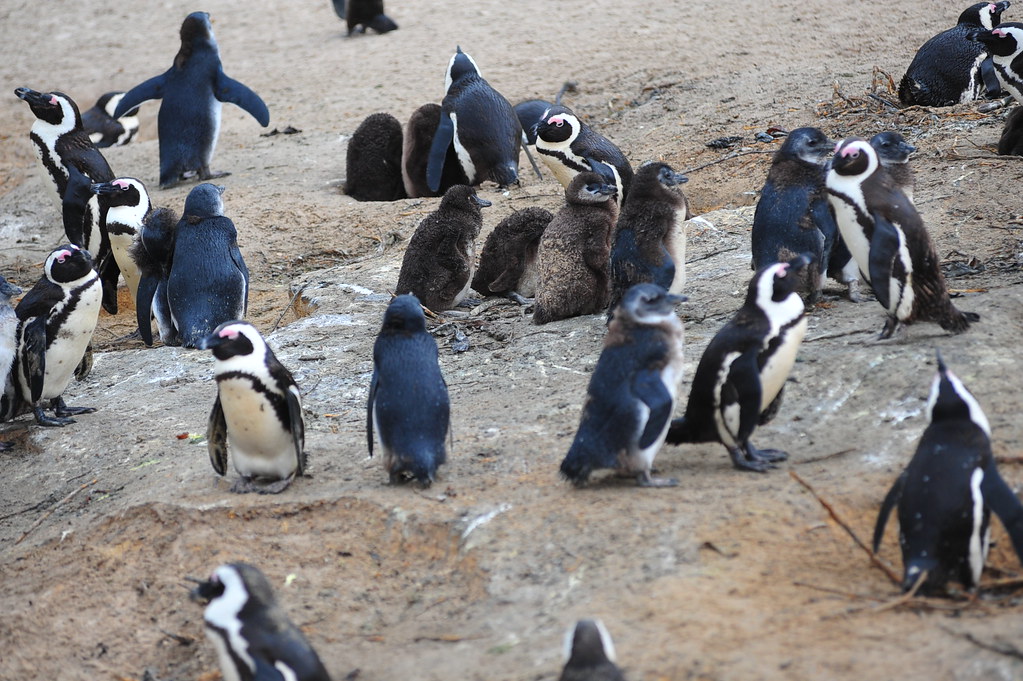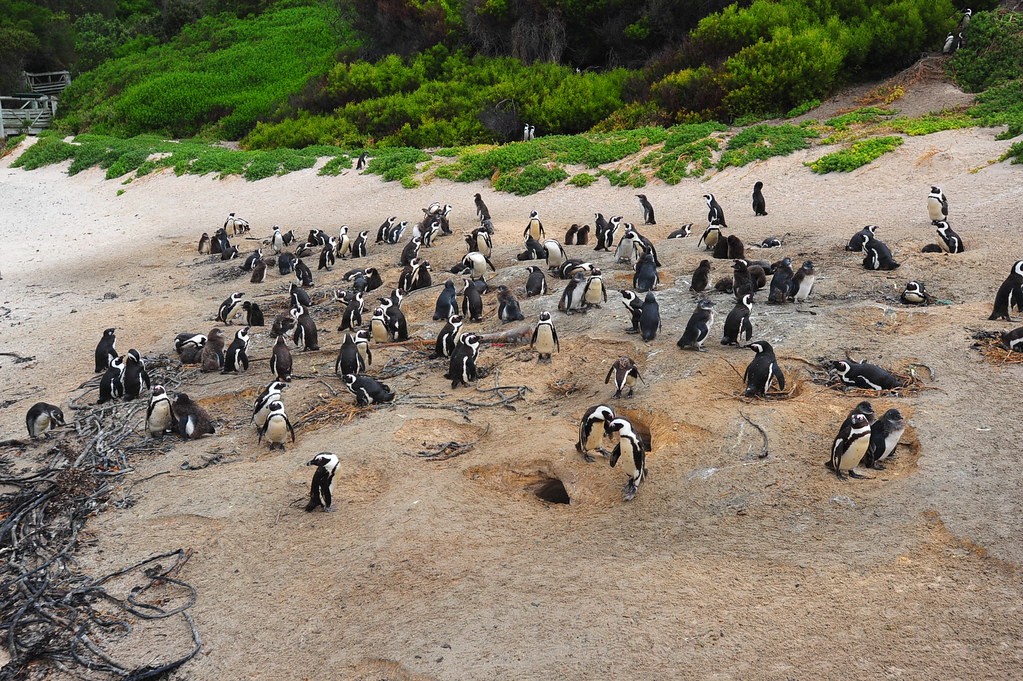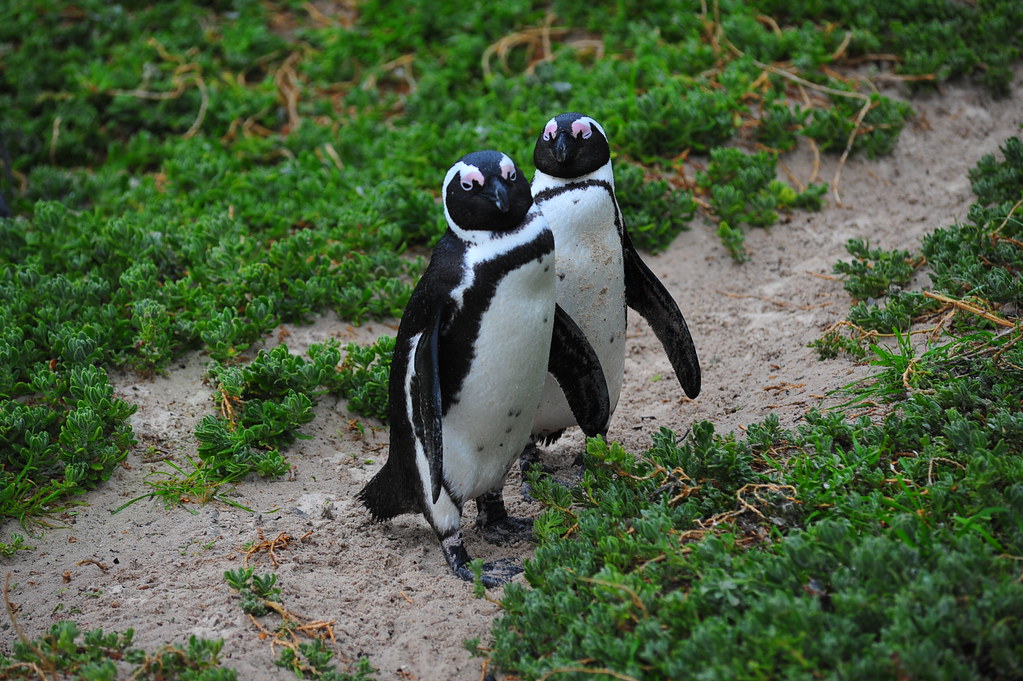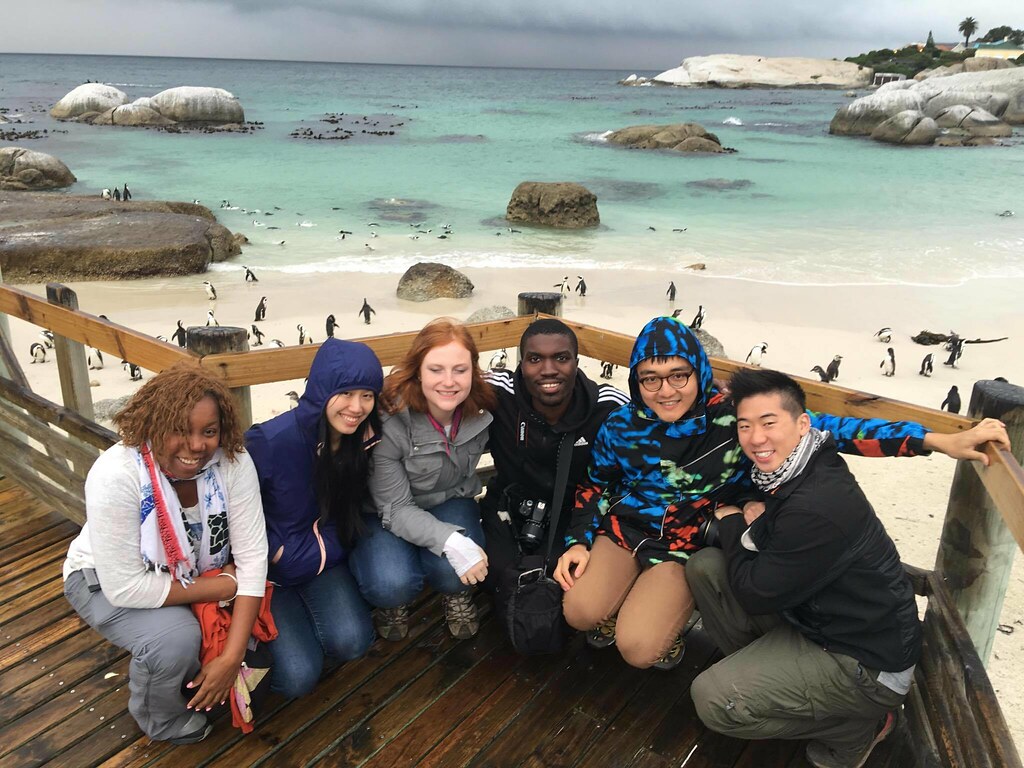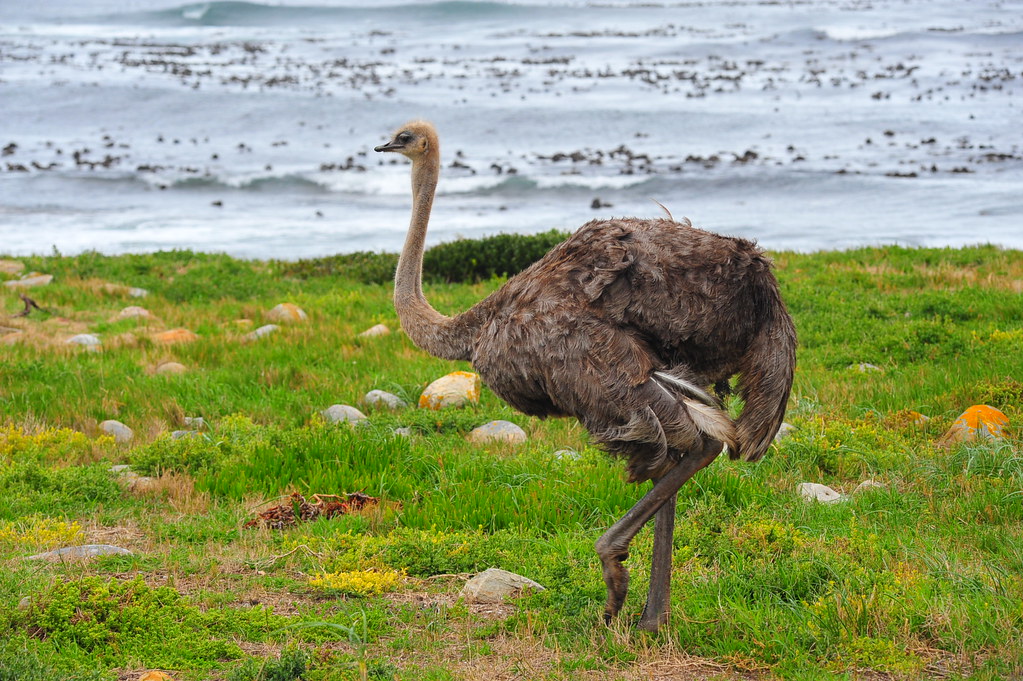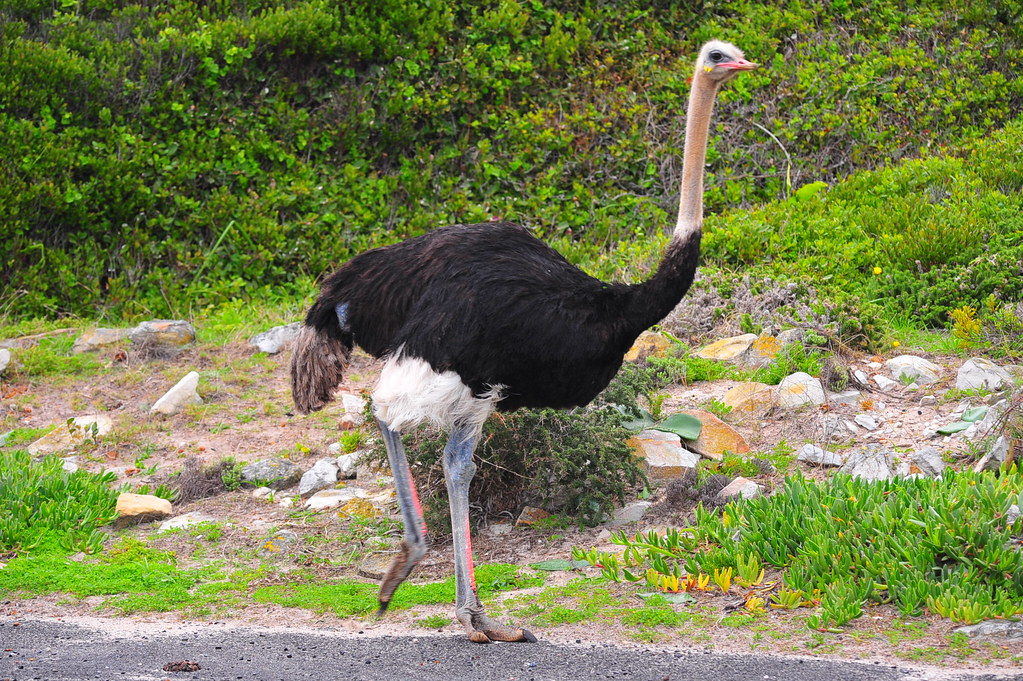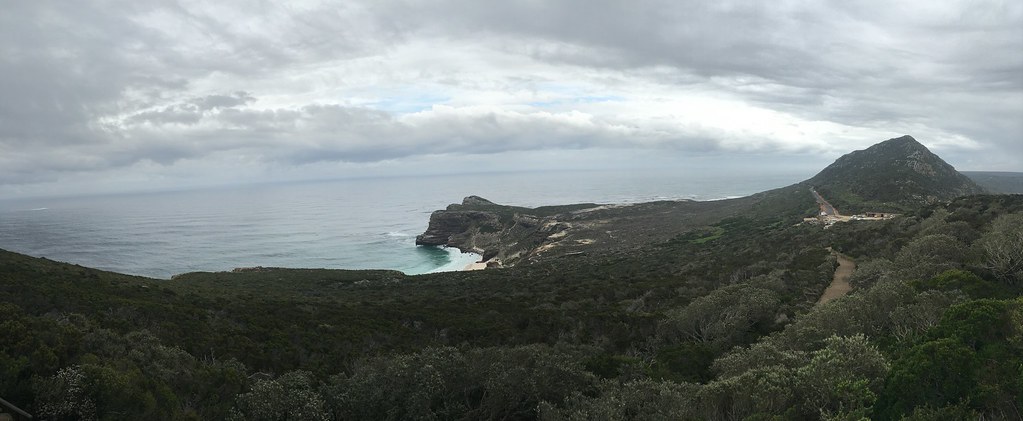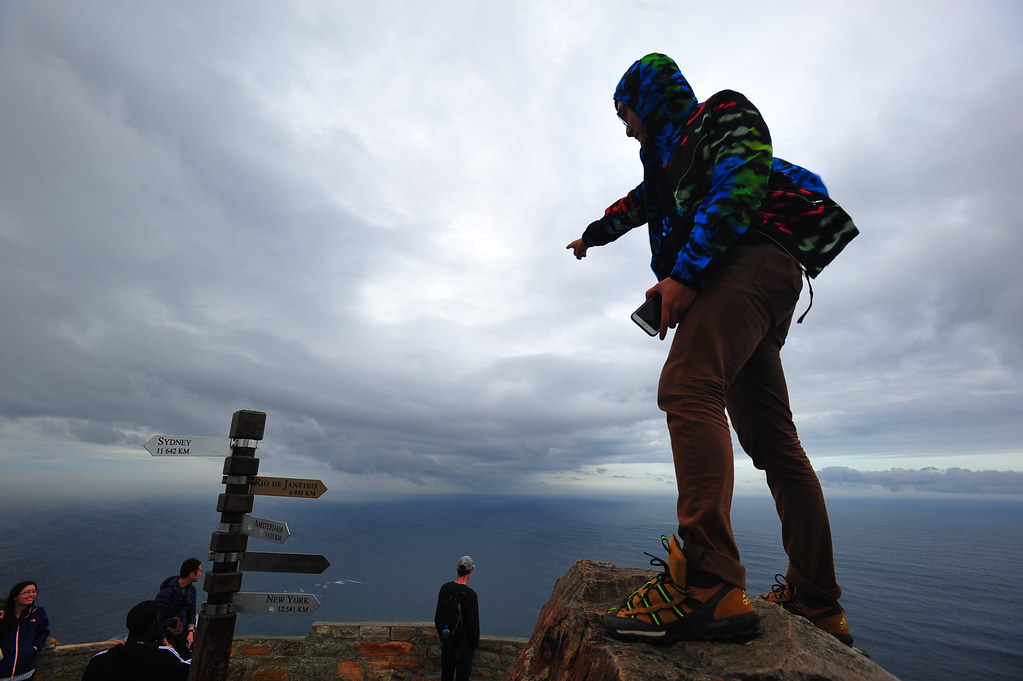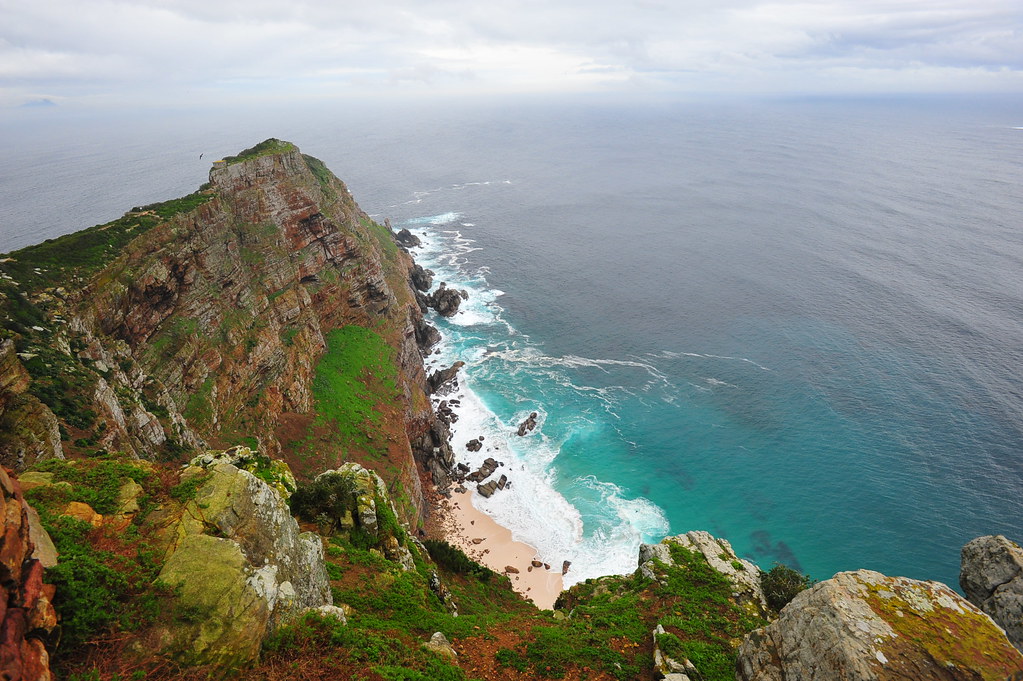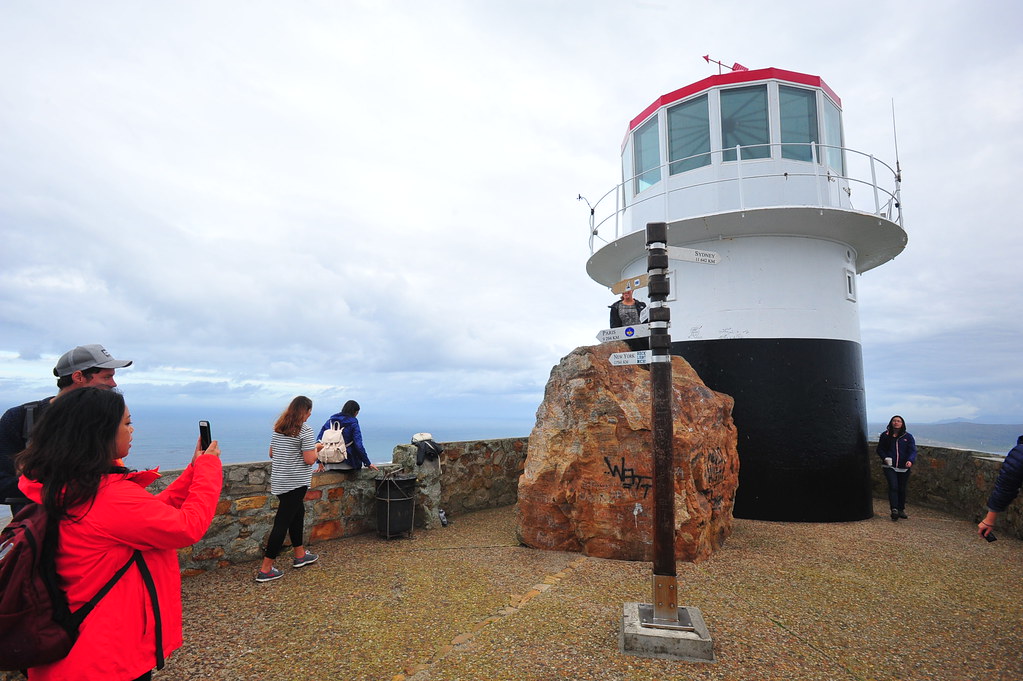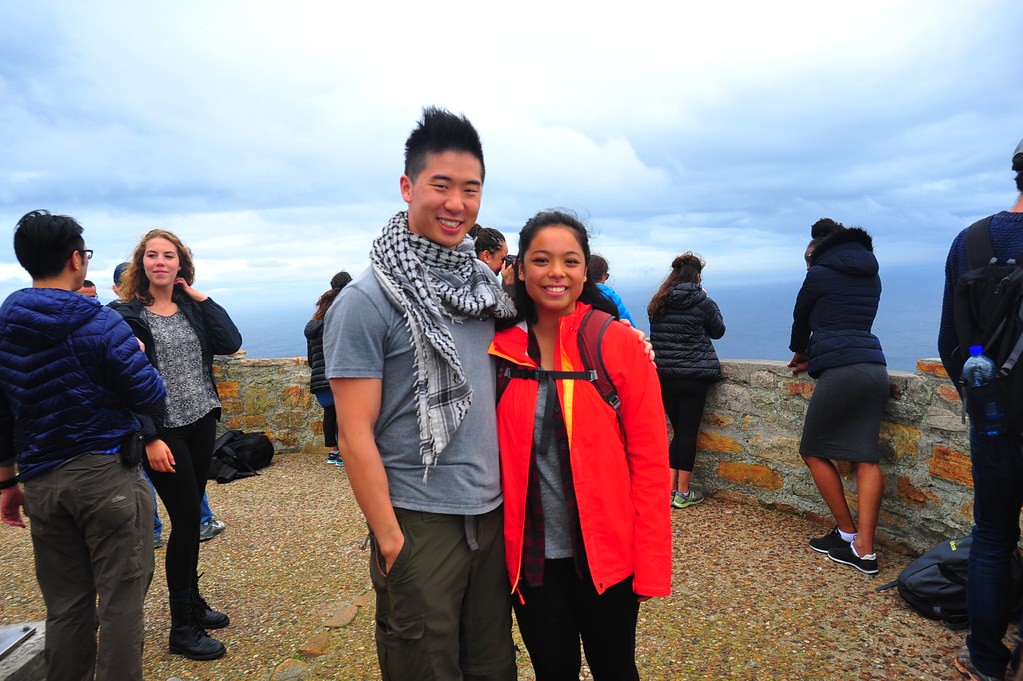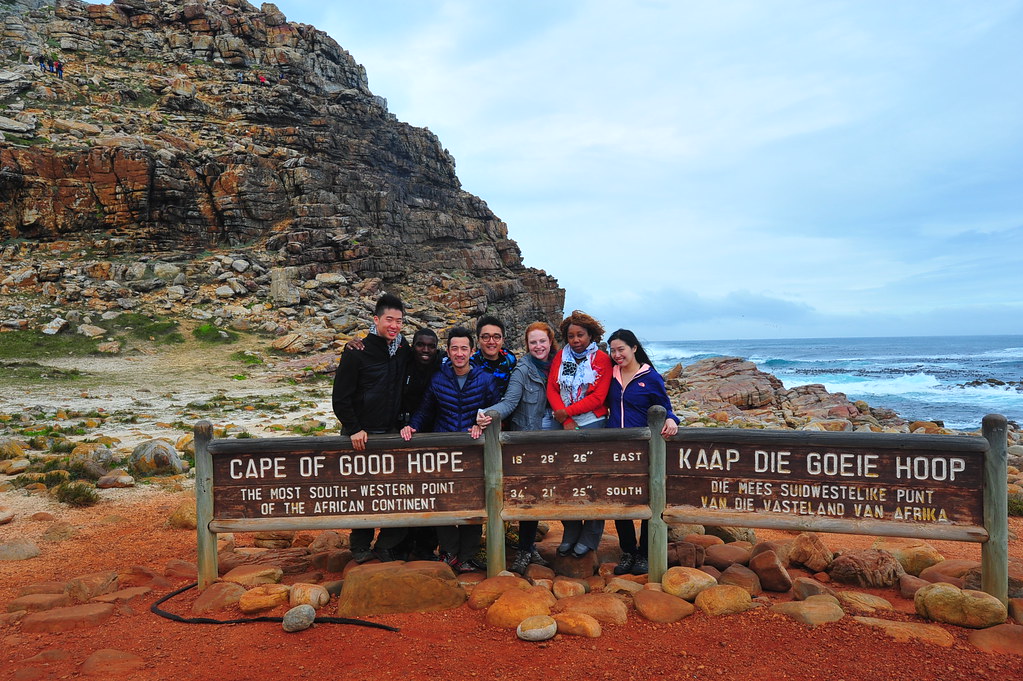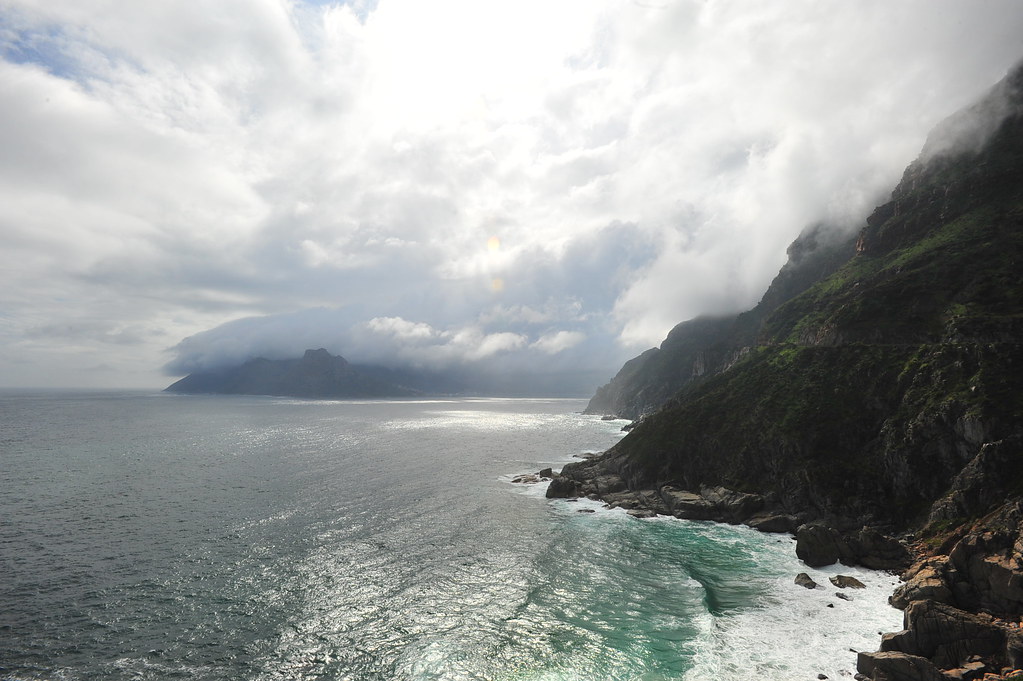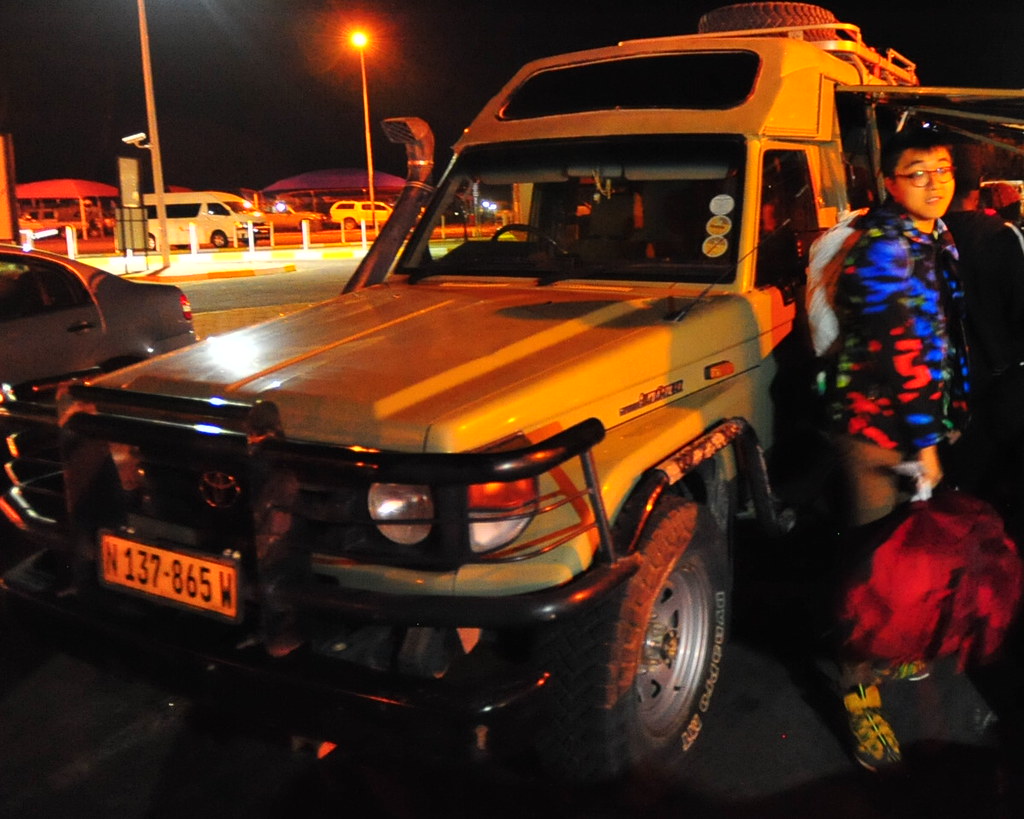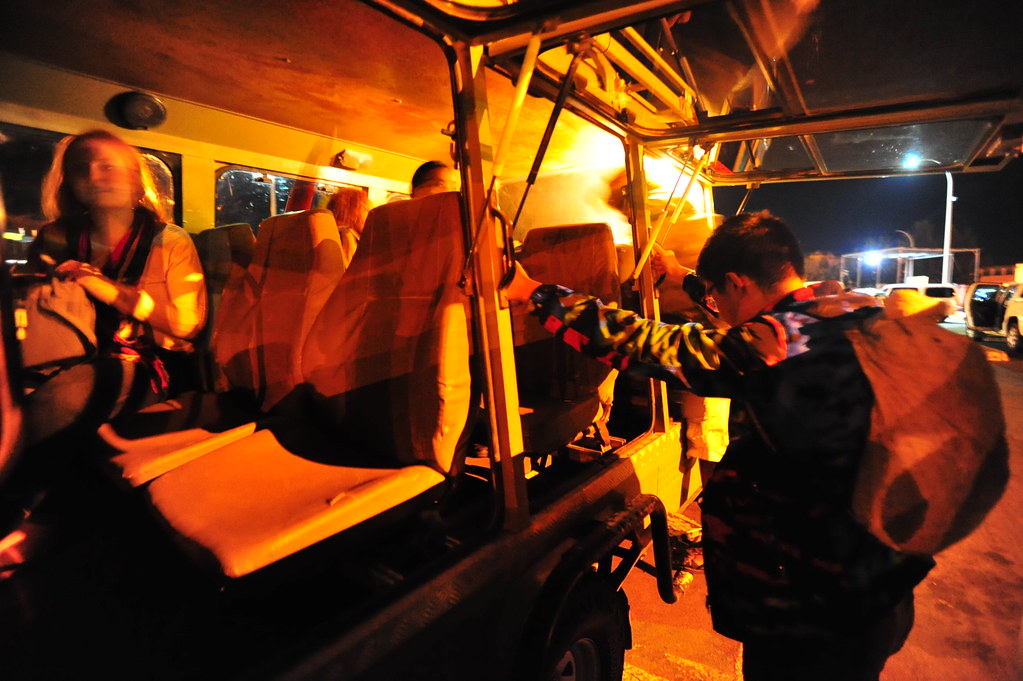After an epic 48 hours in Cape Town and capping off with an unforgettable 6 hour dinner at La Colombe, the group returned at 1am to our hostel and packed ahead for our drive to The Cape of Good Hope early the next morning. I foolishly chose to stay up until 3am blogging, only getting an ungodly 3 hours of sleep before we had to leave again.
Our plan for the day was to drive down from Cape Town beginning at 7am to the Cape of Good Hope, returning to the airport by 3pm for our 5pm flight to WIndhoek, Namibia. And where Sam and Mike elected to stay behind to explore more of Cape Town for the weekend, Nadi would join us in their place for Namibia.
Beginning the drive at 7am from Greenpoint, we reached False Bay (named for being frequently and incorrectly assumed to be that of the main Cape Town city) by 8am, and got a great view of the beach below.
This is known to be a great beginner’s surfing spot, although it’s also home to the Great White Shark.
After a few minutes here, we drove onwards to Simon’s Town to see native African penguins at the Boulder’s Beach Penguin Colony (65 rands per person). Although I’ve found them to be very similar to the emperor, chinstrp and gentoo penguins we saw in Antarctica 2 years ago, the African penguins here are more comfortable around humans; instead of running away from you in Antarctica, here they’ll bite you if you get too close (especially with your selfie stick!).
Equally cute, nonetheless…
August happens to be their mating season, so you’ll see a lot of “fluffier” penguins which are the infants who have yet to undergo their moulting period, as well as many coupled-up adult penguins who choose to stay together for life.
After about half an hour here, we drove onwards about 45 minutes longer to reach the edges of the Cape of Good Hope Nature Reserve, which resembles The Burren area of Ireland that we had driven to a few months earlier.
If you’re lucky, you’ll catch a view of the native ostriches here, which when they’re by the sea can be a rare sight. The brown ones are female, and the black/white ones are male.
While here, consider a hike up Cape Point Peak to the Old Cape Point Lighthouse. Although a semi-steep hike that’ll take about 10-15 minutes, it’s nowhere as brutal as the Lions Head or Table Mountain hikes in Cape Town.
Built in 1857, the Old Cape Point Lighthouse amusingly never lived up to its potential. It was frequently obscured by fog due to its height of 283m above sea level, thus rendering it useless to approaching ships. After the Portuguese Lusitania was shipwrecked in 1911, another Lighthouse was built nearby at 87m above sea level.
Views from the top:
It was at about this point where I struck up a conversation with the girl on the left (in the photo above), noticing she and her friend had American accents. When one question led to another about where they were from (New Jersey), what they were doing here (some medical-related program) and that somehow we were both were interested in Emergency Medicine, barely a breath passed before her eyes widened and she blurted out: “Do you do ECAASU?”
Lo and behold, in the middle of nowhere at the edge of civilization, a random University of Pittsburgh student would recognize me as her workshop facilitator (on the topic of travel no less) back at the ECAASU 2013 conference at Harvard!
Of all the places to run into each other again. . . .
After quickly exchanging contact information and betting on the potential of traveling together in the future, I headed back down with my group still stunned as we drove onwards to Cape Point, the most southwestern point of the African continent:
Ladies and gentlemen, I present to you the edge of the civilized world:
Any further we would reach Antarctica 600km away (hah, been there done that!).
After about half an hour taking photos and walking around, we drove back on the west side of the peninsula, reaching the scenic beachhead by Chapman’s Peak.
And Chapman’s Peak itself, named after legendary sailor John Chapman who swam in the freezing waters here to retrieve fresh drinking water for his stranded crew.
Driving down the mountain pass here is extraordinarily breathtaking, as the mountain itself is built from multiple layers of sand deposits that have been pressed down over millions of years when these lands were still underwater.
We finally stopped at Hout’s Bay and Fisherman’s Wharf for a quick lunch at 1:30pm, watching locals feed the seals here.
By 2pm we were off again, quickly adding in a nail-biting detour to find Hout Bay Educare, an elementary school that Kel volunteered for when he was here 4 years ago. Despite Kel not being able to find it on his own 3 days earlier and the fear that we would miss our flight, we finally located it with help from the locals and got Kel his reunion photo. We then blasted off to the airport at 2:15pm.
And thanks to relatively light traffic conditions in our favor, we reached Cape Town International airport by 3pm and checked into our 5pm international flight to WIndhoek, Namibia.
One more country left! We now just landed in Namibia at 8pm, and was picked up by this TANK, which will be our mode of transport for the next 3 days. This baby will always have right of way.
It took nearly 45 minutes (even with no traffic on the road) to drive from the airport to Windhoek, but as a warm warm welcome, we’re currently eating at atmospheric outdoor Joe’s Beerhouse.
Tomorrow, we finish our 3 week adventure with a weekend trip to the legendary sand dunes of Sossusvlei!
![]()
- At time of posting in Cape of Good Hope, it was 17 °C - Humidity: 74% | Wind Speed: 16km/hr | Cloud Cover: raining, partly cloudy



